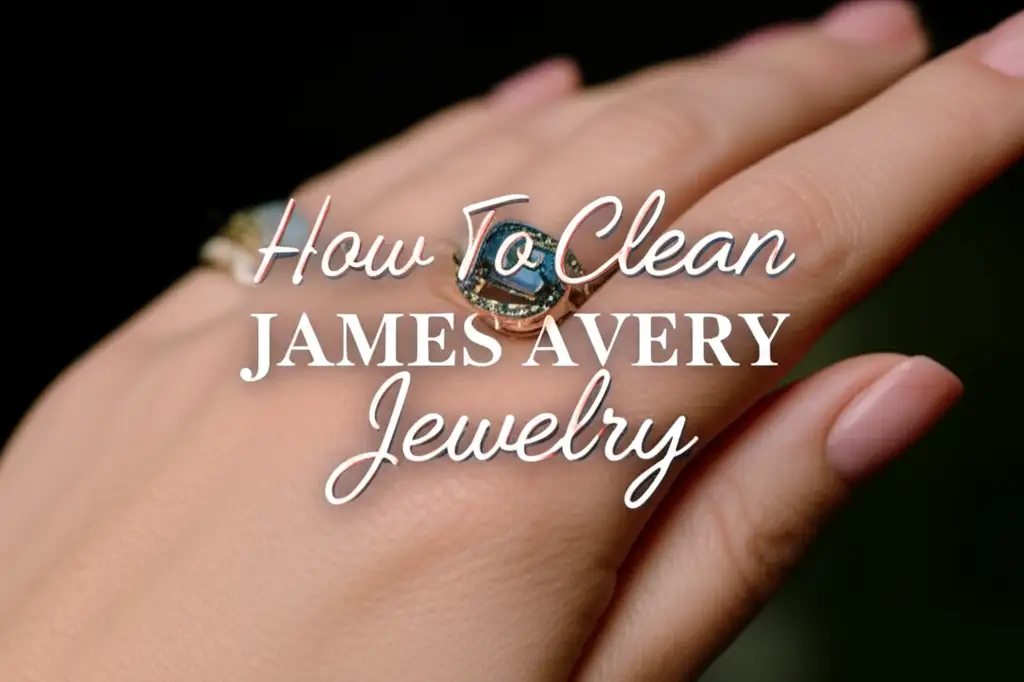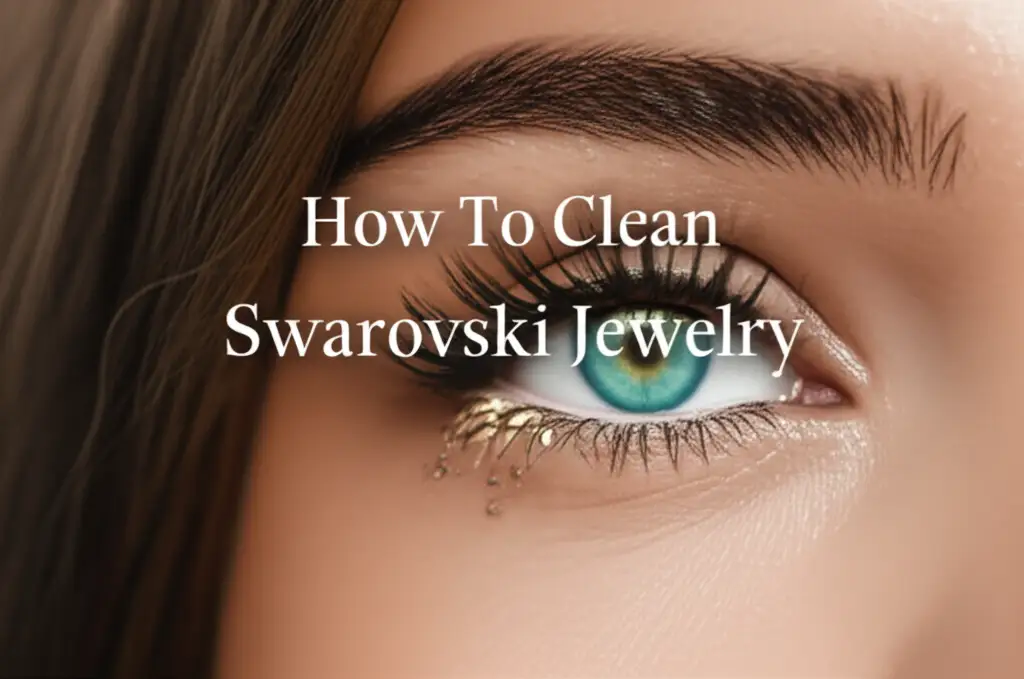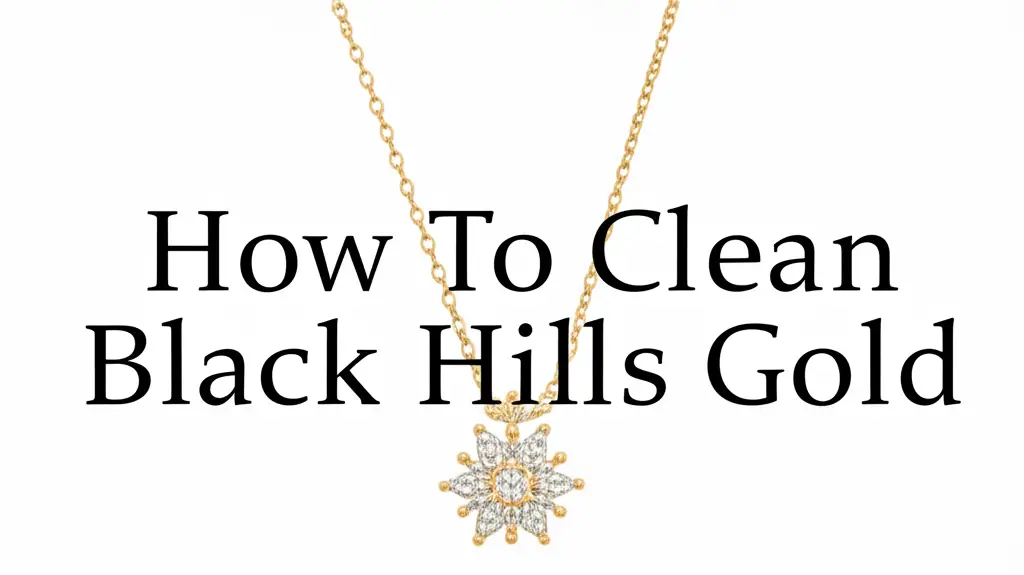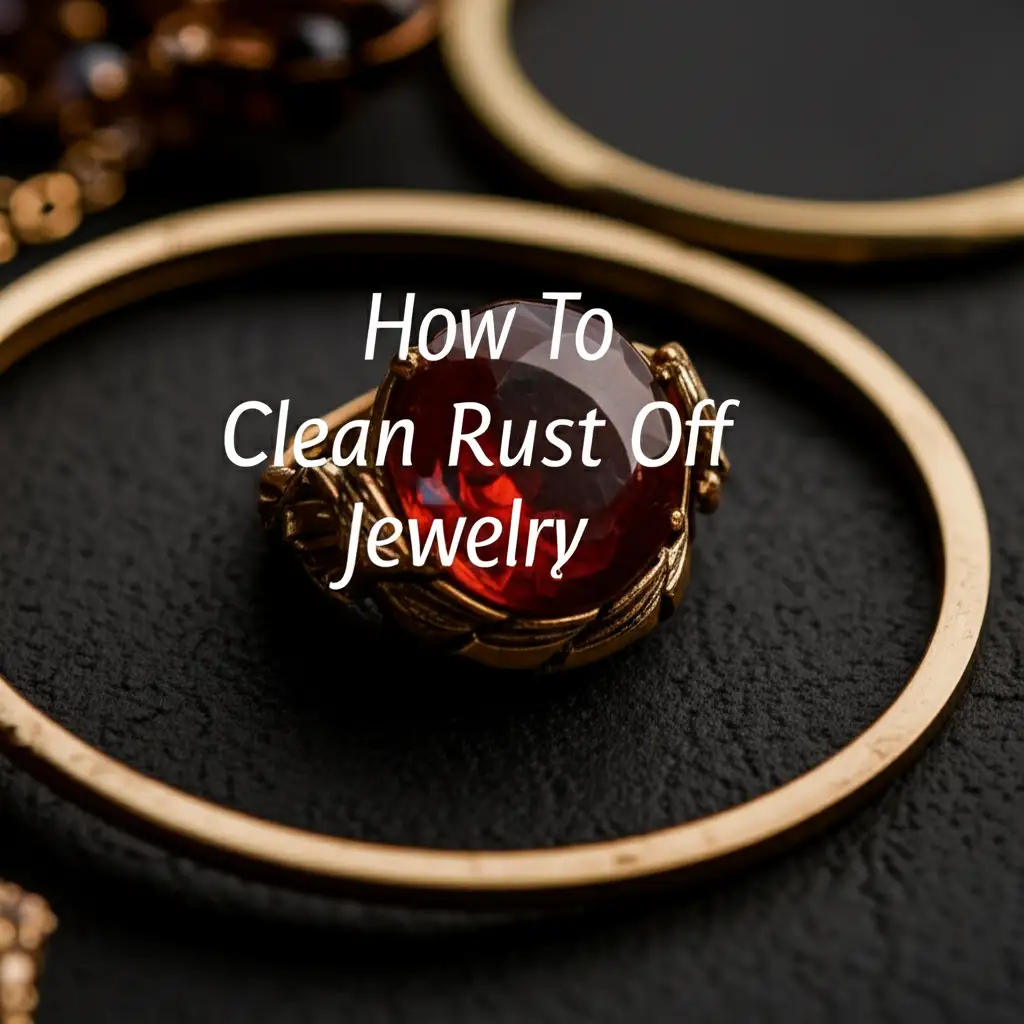· Jewelry Care · 15 min read
How To Clean Sterling Silver With Gemstones
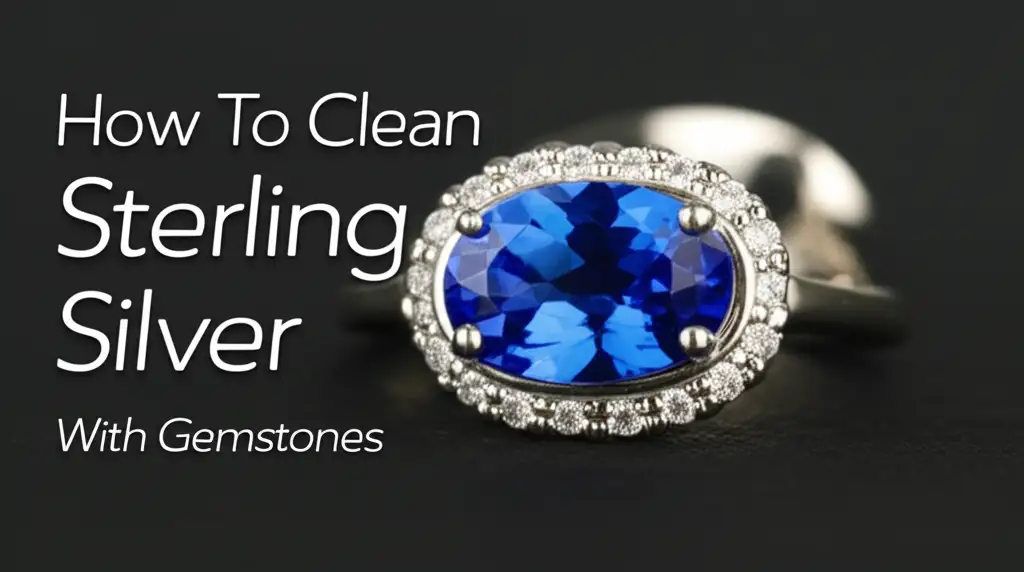
Expert Tips: Clean Sterling Silver with Gemstones
Your sterling silver jewelry with gemstones holds special meaning. It looks beautiful on you. Over time, sterling silver naturally tarnishes. This dulls its shine. Gemstones can also lose their sparkle from dirt and oils. Cleaning these pieces correctly is very important. You need to protect the delicate stones while restoring the silver’s luster.
Knowing how to clean sterling silver with gemstones properly keeps your treasures safe. You avoid damage to the stones or settings. This guide will show you safe and effective cleaning methods. We will cover gentle techniques for various gemstones. We will also highlight what to avoid. You will learn how to make your cherished pieces shine again.
Takeaway
- Identify Gemstones: Know your stone’s hardness and porosity before cleaning.
- Use Gentle Methods First: Warm water and mild soap are safest for most pieces.
- Avoid Harsh Chemicals: Many cleaners damage stones or silver.
- Protect Soft Stones: Opals, pearls, and turquoise need special care.
- Prevent Tarnish: Store jewelry properly to reduce cleaning frequency.
Concise Answer to the Main Query
To safely clean sterling silver with gemstones, use warm water and a small amount of mild, non-detergent soap. Gently wipe the silver and stones with a soft cloth or brush, then rinse thoroughly and dry completely. Avoid harsh chemicals or abrasive materials that can damage delicate stones or the silver finish.
Understanding Your Jewelry: Silver and Stone Types
Cleaning sterling silver with gemstones starts with understanding what you own. Sterling silver is an alloy. It contains 92.5% pure silver and 7.5% other metals, usually copper. This mix makes silver stronger, but it also causes tarnish. Tarnish is a natural chemical reaction. It forms a dark layer on the silver surface.
Gemstones come in many forms. They have different hardness levels and properties. Some stones, like diamonds, are very hard. Others, like opals or pearls, are soft and porous. Porous stones absorb liquids easily. This means they can be damaged by water or cleaning solutions. Knowing your gemstone type helps you choose the right cleaning method. Always approach your cleaning task with caution.
H3: Sterling Silver Basics
Sterling silver is popular for jewelry. It is durable yet soft enough for intricate designs. Its bright, white luster makes it appealing. However, sterling silver reacts with sulfur in the air. This reaction creates the dark layer we call tarnish. Regular cleaning removes this tarnish. This helps maintain the silver’s original shine. Proper care also prevents deep discoloration.
H3: Gemstone Hardness and Porosity
Gemstones vary greatly. Hardness is measured on the Mohs scale. Diamonds are a 10, the hardest. Pearls are 2.5-4.5, very soft. Soft stones scratch easily. Porous stones, like turquoise or opals, absorb liquids. Non-porous stones, like sapphires or rubies, do not. Cleaning methods must match the stone’s properties. You must protect the stone from damage.
Gentle Cleaning for Most Gemstones
Most sterling silver jewelry with gemstones can be cleaned safely at home. The best approach is often the simplest. This method uses warm water and a mild soap. It is gentle enough for many types of gemstones. This basic cleaning helps remove oils, dirt, and light tarnish. It keeps your jewelry looking fresh.
You need a few simple supplies. Gather a small bowl, warm water, and a soft-bristled brush. An old, soft toothbrush works well. Choose a mild, non-abrasive soap. Dish soap without strong degreasers or perfumes is often suitable. This method is safe for most hard gemstones. These include diamonds, sapphires, rubies, and amethyst.
H3: The Basic Soap and Water Method
First, fill a small bowl with warm water. Add a few drops of mild dish soap. Do not use harsh detergents. Swirl the water to mix the soap. Place your sterling silver jewelry into the solution. Let it soak for about 10-15 minutes. This softens any grime. It makes cleaning easier.
Next, take the jewelry out. Use a soft-bristled brush. Gently scrub the silver and around the gemstones. Pay attention to crevices where dirt collects. Be careful not to dislodge any stones. After scrubbing, rinse the jewelry under cool, running water. Ensure all soap residue is gone. Finally, dry the piece completely with a soft, lint-free cloth. Polishing cloths are excellent for this.
Special Considerations for Delicate Gemstones
Some gemstones need extra care. They are more delicate than others. These stones can be scratched easily. They can also absorb liquids or chemicals. Cleaning these gems requires a very gentle touch. You must avoid harsh methods. You must also avoid long water exposure. These stones include pearls, opals, turquoise, and emeralds.
Do not use ultrasonic cleaners for these delicate gems. The vibrations can cause fractures in the stones. They can also loosen settings. Harsh chemicals found in many commercial jewelry cleaners are also a risk. These chemicals can pit the surface of softer stones. They can also strip natural oils from some organic gems. Always research your specific gemstone before cleaning.
H3: Cleaning Pearls
Pearls are organic gems. They are soft and porous. Never submerge pearls in water for long periods. Do not use chemicals or abrasives. After wearing, simply wipe pearls with a soft, damp cloth. This removes skin oils and dirt. For a deeper clean, use a very mild soap solution on a cloth. Gently wipe the pearls. Rinse the cloth and wipe again to remove soap. Let them air dry.
H3: Caring for Opals and Turquoise
Opals and turquoise are also porous. They contain natural water. Extreme temperature changes can crack them. They can also lose moisture and become dull. Avoid prolonged water exposure. Do not use harsh chemicals. Wipe them with a soft, damp cloth. You can use a very mild soap on the cloth. Quickly rinse and dry them. Never use an ultrasonic cleaner.
H3: Emeralds and Other Sensitive Stones
Emeralds are beautiful but can be fragile. They often have natural inclusions. These make them prone to chipping. Clean emeralds with warm, soapy water. Use a soft brush. Avoid strong pressure. Rinse and dry quickly. Other stones like peridot, tanzanite, and moonstone also benefit from gentle cleaning. They are not as hard as sapphires. Always prioritize safety over aggressive cleaning.
Tarnish Removal for Sterling Silver (Gemstone-Safe Methods)
Sterling silver will tarnish over time. This is unavoidable. When gemstones are present, you must be careful. Traditional silver polishes can be too harsh. They can scratch or dull stones. Some even contain chemicals that react with certain gems. We will focus on methods that are safe for both the silver and the stones.
These methods help lift tarnish without damaging your precious gems. Baking soda and aluminum foil are common household items. They can be very effective. Always test a small, hidden area first. This ensures no adverse reaction occurs. Remember, patience is key. Do not scrub too hard, especially around delicate settings.
H3: Gentle Baking Soda Paste
Baking soda is a mild abrasive. It can remove light tarnish from silver. It is generally safe for most hard, non-porous gemstones. Mix baking soda with a small amount of water. Create a thick paste. Apply this paste to the sterling silver parts only. Avoid direct contact with softer or porous gemstones. You can use a cotton swab for precise application.
Use a soft cloth or a very soft toothbrush. Gently rub the paste onto the tarnished silver. Do this in small, circular motions. The paste will lift the tarnish. Do not scrub hard. After cleaning the silver, rinse the piece thoroughly under cool running water. Make sure all paste is gone. Dry immediately with a soft, lint-free cloth. For more baking soda cleaning tips, learn how to clean a silver necklace with baking soda.
H3: The Aluminum Foil and Baking Soda Bath
This method uses an electrochemical reaction. It is effective for moderate tarnish. It can be safe for many gemstones. However, some porous or treated stones might react poorly. Always use caution. Line a bowl with aluminum foil, shiny side up. Place your jewelry on the foil. Sprinkle a few tablespoons of baking soda over the jewelry. Add a pinch of salt if you wish.
Pour hot (but not boiling) water over the jewelry. Ensure the jewelry is submerged. You will see bubbles form. This is the reaction removing the tarnish. Let it soak for 5-10 minutes. The tarnish will transfer to the foil. Remove the jewelry and rinse thoroughly. Dry it completely with a soft cloth. This method is often recommended for how to clean silver jewelry with aluminum foil. This method is also similar to using vinegar and baking soda to clean silver, but water is generally preferred when gemstones are present.
What to AVOID When Cleaning Silver with Gemstones
Knowing what not to do is as important as knowing what to do. Many common cleaning products and methods can harm your sterling silver and gemstones. Using the wrong approach can lead to irreparable damage. It can dull the shine of your silver. It can scratch, pit, or even dissolve your precious stones. Always read labels carefully. When in doubt, choose the gentlest method.
Protect your investment. Avoid aggressive cleaning techniques. Do not use abrasive materials. Stay away from strong chemical cleaners. Some treatments on gemstones can also be removed by certain chemicals. For example, some emeralds are oil-treated. Chemical cleaners can strip this oil. This affects their appearance.
H3: Harsh Chemicals and Abrasives
Never use household cleaners like bleach or ammonia. These chemicals are very strong. They can damage sterling silver. They can also react with and destroy many types of gemstones. Bleach corrodes silver. Ammonia can dull the surface of some stones. Abrasive cloths or scrubbing pads will scratch both the silver and the gems. Use only soft cloths and brushes. Avoid any cleaning product not specifically made for jewelry with gemstones.
H3: Ultrasonic Cleaners and Steam Cleaners
Ultrasonic cleaners use high-frequency sound waves. These waves create vibrations. The vibrations dislodge dirt. While effective for some jewelry, they are risky for most gemstone pieces. The vibrations can cause soft or fractured stones to crack. They can also loosen stone settings. This leads to stones falling out.
Steam cleaners use high heat and pressure. This can also damage sensitive gemstones. Heat can crack stones that have internal inclusions. It can also dry out porous gems. This leads to color changes or brittleness. Always avoid ultrasonic and steam cleaners for sterling silver jewelry with gemstones. This is especially true for items like how to clean silver rings with stones, where the settings are often delicate.
H3: Toothpaste
Toothpaste is a common home remedy for cleaning silver. However, it is not recommended for sterling silver with gemstones. Toothpaste contains abrasive particles. These particles can scratch both the silver and the surface of your gemstones. Even “gel” toothpastes can be too harsh. The abrasives cause tiny scratches. These scratches build up over time. They make your jewelry look dull. It is better to use the mild soap and water method. To learn more about toothpaste cleaning, see how to clean sterling silver with toothpaste, but remember its limitations with gemstones.
Routine Care and Prevention
Proper routine care significantly reduces the need for deep cleaning. Prevention is key to keeping your sterling silver and gemstones sparkling. Regular, gentle maintenance extends the life and beauty of your jewelry. It also minimizes tarnish buildup on silver. This means less effort to restore its shine.
Think about how you wear and store your pieces. Small changes in habits can make a big difference. Protecting your jewelry from harsh environments helps a lot. It shields the delicate surfaces of both the silver and the stones. This also prevents accidental damage or loss of gemstones.
H3: Wiping After Each Wear
A simple habit makes a big impact. After each time you wear your sterling silver jewelry with gemstones, wipe it down. Use a soft, lint-free cloth. This removes skin oils, sweat, and cosmetics. These substances contribute to tarnish on silver. They also build up on gemstones. Regular wiping prevents dirt from hardening on the surface. This keeps your jewelry brighter for longer periods.
H3: Proper Storage
Store your sterling silver and gemstone jewelry correctly. Air exposure causes tarnish. Humidity also speeds up this process. Keep your jewelry in a cool, dry place. Store each piece separately. This prevents scratches. You can use anti-tarnish bags or cloths. These bags have chemicals that absorb sulfur. A jewelry box with fabric lining is also a good choice. Individual compartments help keep pieces from rubbing against each other.
H3: When to Avoid Wearing Jewelry
Take off your jewelry during certain activities. Remove it before cleaning the house. Chemicals from cleaners can damage both silver and stones. Take off rings before washing dishes. Soap residue can dull gemstones. Remove jewelry before swimming in chlorinated pools or saltwater. Chlorine corrodes silver and harms many stones. Saltwater can cause tarnish. Also, avoid wearing jewelry during strenuous activities. This prevents physical damage.
Professional Cleaning and Inspection
Sometimes, home cleaning is not enough. Or, your jewelry might be very valuable. It might have delicate settings. In these cases, professional cleaning is the best option. A professional jeweler has specialized tools and knowledge. They can clean your sterling silver and gemstones safely. They also provide inspections.
Regular professional inspections are important. They can spot problems before they become serious. Loose stones can be reset. Damaged prongs can be repaired. This protects your investment. It ensures your cherished pieces remain secure and beautiful for years. Do not hesitate to consult an expert.
H3: When to Seek a Jeweler
Consider a professional jeweler for:
- Heavy Tarnish: If your silver is deeply discolored and home methods fail.
- Delicate or Antique Pieces: These items require expert handling.
- Valuable Gemstones: If you own very expensive or rare stones.
- Loose Stones: A jeweler can tighten settings and prevent loss.
- Unknown Gemstone Types: If you are unsure what type of stone you have.
- Damaged Jewelry: For repairs beyond simple cleaning.
H3: Benefits of Professional Cleaning
Professional cleaning offers several advantages. Jewelers use commercial-grade cleaners. These are formulated for specific metals and stones. They have specialized equipment like professional ultrasonic or steam cleaners. These are safe when used by trained hands. They know which settings and stones can handle which methods.
A professional cleaning goes beyond surface dirt. They can reach intricate parts. They restore the silver’s original luster. They also make your gemstones sparkle like new. They can also perform a thorough inspection. They check for loose prongs or damaged settings. This ensures the longevity and safety of your jewelry.
FAQ Section
Q1: Can I use toothpaste to clean sterling silver with gemstones?
No, it is not recommended. Toothpaste contains abrasives. These can scratch both sterling silver and the surface of your gemstones. This creates tiny scratches. Over time, these scratches will dull the appearance of your jewelry. Stick to milder cleaning methods to protect your pieces.
Q2: Is it safe to use an ultrasonic cleaner for gemstone jewelry?
Generally, no. Ultrasonic cleaners use vibrations. These vibrations can damage delicate or porous gemstones. They can also loosen stone settings. Stones like opals, pearls, emeralds, and turquoise are especially vulnerable. It is best to avoid ultrasonic cleaners for sterling silver jewelry with gemstones.
Q3: How often should I clean my sterling silver with gemstones?
The frequency depends on how often you wear the jewelry. If worn daily, a quick wipe after each wear is good. A gentle soap and water clean every few weeks or months helps maintain shine. For items worn less often, clean them as tarnish appears. Regular maintenance prevents heavy buildup.
Q4: What if my gemstone looks cloudy after cleaning?
A cloudy appearance after cleaning might mean a few things. You might have soap residue left on the stone. Rinse it thoroughly under cool running water. It could also mean the stone is porous and absorbed something. For such stones, ensure quick drying. If the cloudiness persists, seek professional advice.
Q5: Can I use silver polish on my sterling silver with gemstones?
Most silver polishes are not safe for jewelry with gemstones. Many polishes contain abrasives or chemicals. These can scratch or damage the surface of your stones. They can also dull porous gems. It is safer to use gentle methods like mild soap and water. Or choose polishing cloths specifically designed for use around gemstones.
Q6: What’s the best way to prevent tarnish on my sterling silver jewelry?
The best way to prevent tarnish is proper storage. Store your sterling silver jewelry in anti-tarnish bags. You can also use a jewelry box lined with anti-tarnish cloth. Keep pieces in a cool, dry place. Avoid high humidity. Also, wipe your jewelry clean after each wear. This removes oils and residues that speed up tarnishing.
Conclusion
Caring for your sterling silver jewelry with gemstones requires a gentle approach. Understanding the specific needs of both the silver and the individual gemstones is paramount. You have learned that warm water and mild soap offer a safe and effective starting point for most pieces. Delicate stones, however, demand extra caution. They need specific care to avoid damage.
Remember to identify your gemstones before you begin cleaning. Always choose the gentlest method first. Avoid harsh chemicals, abrasive tools, and ultrasonic cleaners. These can cause irreversible harm. Regular wiping and proper storage help prevent tarnish and keep your jewelry looking its best. If you face heavy tarnish or have very valuable pieces, do not hesitate to consult a professional jeweler. By following these expert tips, you can safely clean sterling silver with gemstones. Your cherished jewelry will remain beautiful and sparkling for many years to come. Start caring for your pieces correctly today.
- sterling silver cleaning
- gemstone care
- jewelry maintenance
- silver tarnish
- delicate jewelry

